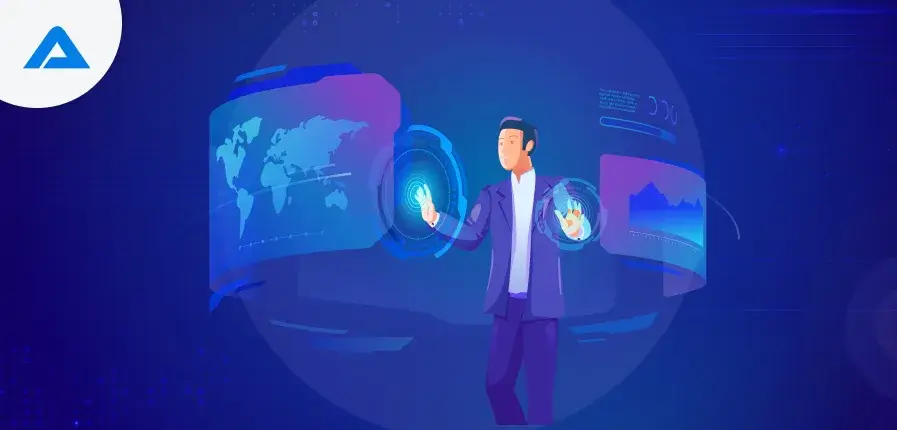The year has just begun, and the business landscape of 2024 is set to be altered by a mighty confluence of disruptive forces. Generative AI’s innovative power and problem-solving ability will reveal the hidden efficiency. Sustainability, no longer just a buzzword, will become an imperative for strategic planning, especially in building AI models. Quantum computing, previously an idea from science fiction, will break the doors of previously unimaginable possibilities.
The world has been transformed into a digital one in the past, and according to McKinsey, the year 2023 witnessed an emergence of technology. Generative AI is one of the technological breakthroughs that helped to make this resurgence. The new technology is built on AI and machine learning applications and can affect various industries.
In 2022, investments in new technologies, such as applied AI advanced connectivity and edge and cloud computing, have declined as they’ve become more advanced. Digital identity and trust architectures remain among the emerging trends of 2024. Quantum technologies, such as quantum, also show a huge possibility of generating value in the future.
Artificial Intelligence and Machine Learning
Artificial intelligence (AI) and machine learning (ML) will be experiencing rapid growth and development by 2024, driving major advances across various industries. AI’s constant development transforms how we work and engage with technologies. One of the major trends is the continuous development of AI capabilities, as evidenced by advances in deep learning, natural language processing, and computer vision.
The incorporation of AI in our lives is more widespread than ever. From personal assistants that can be activated with voice, smart home devices, and recommendation algorithms for streaming apps, AI has seamlessly woven into our everyday routines. The ease of use and efficiency developed by AI development company help to create an increasingly connected and automated life.
In the world of Machine Learning, there’s an increase in innovative technologies that go beyond the traditional supervised learning models. Reinforcement and unsupervised learning are getting more attention and allowing systems to adapt and learn without programming explicitly. This opens the way to more complex problems that allow machines to make decisions in response to feedback and experience.
AI-driven technologies enormously impact all industries, transforming processes and boosting productivity. AI analyzes medical images, drug discovery, and customized treatment plans in healthcare. The Finance sector benefits from using AI to detect fraud and manage risk and trading algorithms. Logistics and manufacturing use AI for predictive maintenance as well as optimization of supply chain processes. The range of AI applications demonstrates its transformational potential across many areas.
Additionally, the emergence of AI is helping accelerate the development of smart cities. AI algorithms can optimize traffic flow, regulate energy consumption, and boost public services. The agriculture sector is experiencing the application of AI to optimize farming practices, which improves crop yield and maximizes resource use. Educational systems incorporate AI to create individualized learning experiences catering to students’ needs.
As AI becomes more sophisticated, ethical concerns and ethical AI practices become more prominent. Worries about the bias of algorithms data privacy and the impact on society of AI technology have led to debates regarding the ethical use and development of powerful AI tools.
Internet of Things (IoT)
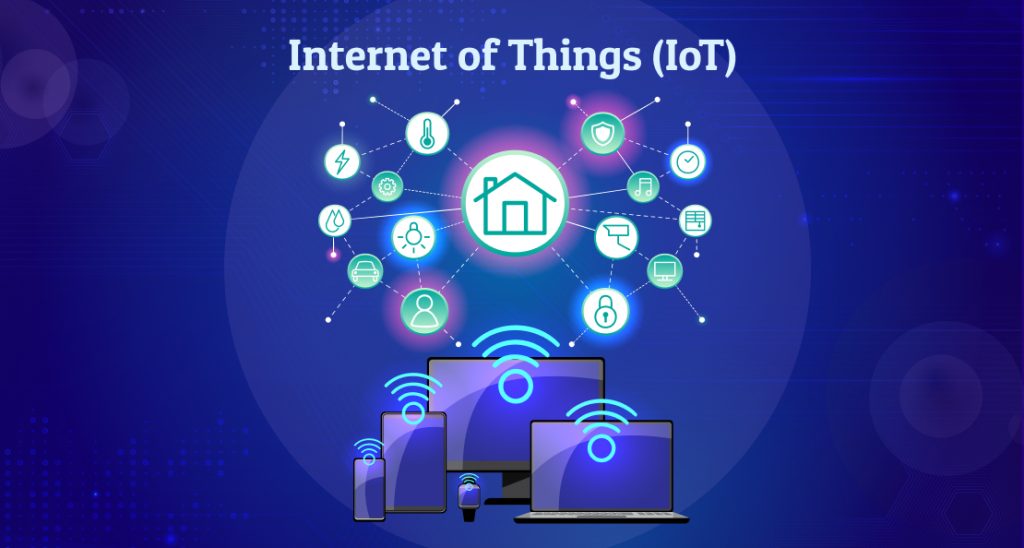
The Internet of Things (IoT) is undergoing an enormous expansion of its ecosystem, changing how devices connect and communicate by 2024. The growth isn’t restricted to the sheer volume of connected devices but expands to various industries and applications that use IoT technologies.
One of the most notable aspects of this IoT transformation is the explosive development of smart homes and the increase in connected devices within homes, from smart lighting and thermostats to security cameras and voice-activated assistants. Integrating IoT into homes increases convenience, energy efficiency, and security. The connectivity of these devices creates an integrated and automated living space where residents can control and monitor all aspects of their residence from a distance.
Beyond residential areas, IoT is making profound advances in agriculture, healthcare, and the industrial sector. IoT devices in the healthcare sector, such as wearable fitness trackers and remote patient monitoring tools, allow for an active health management system and rapid intervention. In agriculture, IoT-driven precise farming methods, which involve sensors, data analytics, and even sensors, can improve yields of crops, track soil conditions, and effectively manage resources. Industries are embracing IoT to automate maintenance and monitor equipment in real-time, as well as supply chain optimization, which results in increased efficiency in operations and savings on costs.
To address these security concerns, IoT app development company creates solutions to strengthen security in the IoT landscape. This includes integrating blockchain technology to ensure secure and tamper-proof transactions in data, introducing strict access controls, and creating standard security frameworks. Collaboration among all stakeholders, including service providers, device makers, and regulatory bodies, is crucial to developing complete security standards and ensuring the proper deployment of IoT technologies.
5G Technology
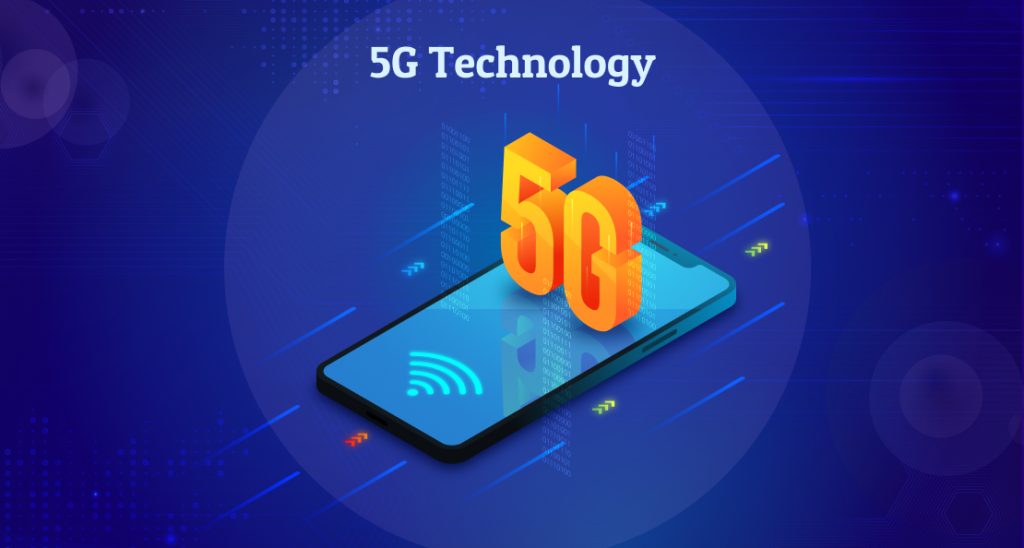
The introduction of 5G technology will mark the beginning of a new era in communications and connectivity as the introduction and deployment of 5G networks will alter the connectivity landscape in 2024. The introduction of 5G networks has become the focus of telecom companies worldwide to ensure that they offer more efficient and reliable internet connectivity.
5G’s impact on technology, connectivity, and communication is significant. With the much faster data transfer speed and lower frequency, the 5G network will allow seamless communication, live interactions, high-quality video conferences, and ultra-responsive applications. The increased connectivity will have implications for individuals and businesses, which opens up new opportunities to work remotely and collaborate with the rapid growth of high-end digital services.
One of the most important promises of 5G is the realm of mobile experience. 5G’s adoption brings enhanced mobile experiences that offer faster upload and download speeds, smoother streaming, and better overall performance for mobile apps. Users can expect to interact through augmented reality (AR) and VR, virtual reality (VR), and a heightened experience of multimedia content that is crystal clear and fast, elevating the overall experience of mobile users to new heights.
5G’s impact goes beyond traditional communications and traditional communication to the Internet of Things (IoT) and autonomous vehicles. The low-latency, high-speed characteristics of 5G networks are vital to meet the vast connectivity needs of IoT devices. This enables various applications, from smart cities with connected sensors to large-scale industrial IoT deployments that optimize processes and resource usage. In the world of autonomous vehicles, 5G plays an essential role in facilitating real-time communication between traffic infrastructure, vehicles, and cloud-based services, increasing the safety and efficiency of transportation systems.
However, the wide-scale deployment of 5G has its issues and concerns, such as the need for massive building of new infrastructures, managing spectrum, and addressing health issues that could arise. Implementing 5G infrastructure demands substantial investment in upgrading existing networks and implementing new technologies. This presents opportunities and challenges for telecommunications companies as well as regulatory bodies.
Augmented Reality (AR) and Virtual Reality (VR)
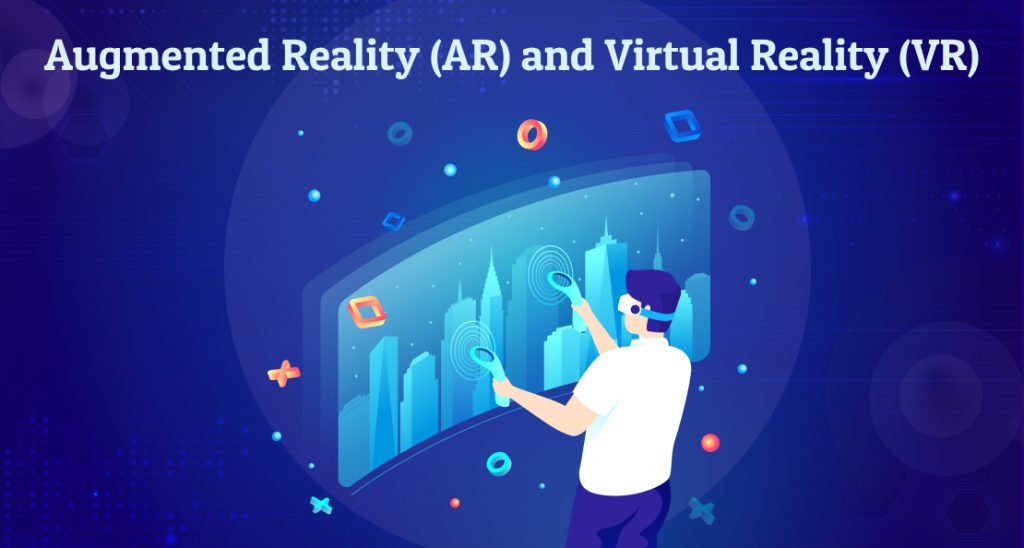
Augmented reality (AR) and virtual reality (VR) will witness a flurry of technological advances by 2024, changing how we interact with physical and digital worlds. The AR and VR technology advancements have pushed the limits of what was thought to be feasible, opening up new possibilities in various industries.
AR and VR technology advancements are marked by hardware capabilities, improved graphics rendering, and integration of more advanced sensors. These advances result in more realistic and immersive experiences and bridge the gap between real and virtual worlds. The advancement of AR and VR equipment, like high-quality and lightweight headsets, has made this technology more accessible to a larger public.
AR and VR are making major gaming, education, and healthcare advances. In gaming, VR technology gives gamers real-time and immersive experiences, while AR can enhance gameplay by overlaying digital elements in the real world. AR and VR are changing traditional learning methods in education by providing interactive and fun simulations, virtual field trips, and three-dimensional educational material. Healthcare software development can benefit from these new technologies by providing simulations of medical training, virtual surgeries, and therapeutic apps that use VR to manage pain and rehabilitation.
Mixed reality experiences that mix elements from each AR and VR. They are rapidly gaining popularity. The convergence lets users interact with physical and digital elements simultaneously, blurring the boundaries between the real and virtual worlds. Mixed reality is a popular technology in training situations where users can manipulate digital objects in a real environment, enhancing skills and learning development.
AR and VR are becoming increasingly popular in business, enabling new ways of remote collaboration and boosting productivity. Companies utilize AR to create interactive presentations, virtual meetings, and remote assistance, whereas VR allows realistic simulations for training and virtual conferences. Incorporating AR and VR within the business process is helping to create a new age in remote collaboration, breaking down geographic barriers and bringing engaging and dynamic communication tools.
Blockchain and Cryptocurrency

The field of Blockchain, as well as Cryptocurrency, is experiencing rapid change in 2024, with advancing trends changing how we think about and employ decentralized technologies. Blockchain, the fundamental technology behind cryptocurrency, constantly evolves, and new trends are emerging to redefine its use across various industries.
One of the major evolving developments in blockchain is the emphasis on interoperability and scale. Blockchain networks are trying to eliminate issues with the speed of transactions and their capacity to achieve the mainstream by providing quicker and more efficient solutions. The quest for interoperability between different blockchain platforms is growing in popularity, encouraging collaboration and interoperability between different blockchain networks.
They were once viewed as a fringe in finance but are now getting mainstream acceptance. Corporate and financial institutions of all sizes embrace cryptocurrency, recognizing its legitimacy as assets. The incorporation of cryptocurrency within traditional banking systems can be seen through introducing cryptocurrency-based financial products, investment by institutions, and most companies’ acceptance of digital currency.
Non-fungible tokens (NFTs) and other digital assets have become significant and transformative in blockchain technologies. NFTs, a unique digital token representing ownership of certain objects or content, are gaining immense traction in entertainment, arts, and gaming. The development and trade of digital currency using blockchain provides creators with new opportunities to monetize their work and verify ownership, which marks an evolution in how we view and trade digital media.
Blockchain development services are making huge financial advances, particularly in transforming the traditional process. Blockchain’s decentralization and transparency are ideal for financing, allowing quicker and safer transactions. Additionally, blockchain is changing supply chain management by offering a traceable and tamper-proof ledger that ensures authenticity and transparency across the entire supply chain. This reduces the chance of fraud and increases efficiency when monitoring the process of producing, shipping, and delivering products.
As blockchain and cryptocurrencies become more popular, regulatory issues and concerns become more prominent. Regulators and governments are preparing guidelines to regulate blockchain technology, ensure that cryptocurrency practices are regulated, and address concerns about money laundering, fraud, and market stability.
Quantum Computing
Quantum Computing stands at the leading edge of technological advancement, advancing research that paves the way to revolutionary advancements. In 2024, Quantum Computing will be a hot topic. Quantum Computing is witnessing an explosion of breakthroughs that have the potential to change computing in the way we think of it.
Scientists and researchers have made significant progress in advancing the path to Quantum Computing, overcoming challenges in qubit stability, accuracy correction, and scalability. The development of quantum algorithms is increasing the capabilities of quantum computers and presenting solutions to complex issues currently unsolvable for conventional computers. This development is highlighted by more advanced quantum processors and the rise of quantum supremacy, in which quantum computers are superior to conventional computers for specific tasks.
The practical applications for Quantum Computing are becoming more real, but there are still challenges. Quantum computers can solve problems associated with optimization as well as cryptography and modeling quantum systems. However, this technology has challenges, such as the vulnerability of quantum bits (qubits) to interference from environmental sources and the necessity of error correction methods. Researchers are working on tackling these issues to realize the full capabilities of quantum computing in practical applications.
The impact that quantum computing could have on Quantum Computing on industries is significant. In fields like finance, quantum-based algorithms can transform how we manage risk, portfolio optimization, and financial modeling. In drug discovery and materials sciences, quantum computing could simulate atomic and molecular interactions with unprecedented accuracy, speeding up the development of new pharmaceuticals and materials. In addition, optimizing supply chains, machine learning, and artificial intelligence will likely benefit from quantum computing.
The comparison of Quantum Computing to classical computing exposes the fundamental distinctions that distinguish them. While traditional computers employ pieces of data that are either 1 or 0, quantum computers use qubits that can exist in different states at once due to the superposition principles and Entanglement. This fundamental feature allows quantum computer systems to deal with certain kinds of data exponentially faster than their traditional counterparts. Quantum supremacy, as demonstrated in certain situations, shows the computational advantages of quantum computers in tackling problems that would be impossible for conventional computers to solve in a reasonable amount of time.
Cybersecurity Trends
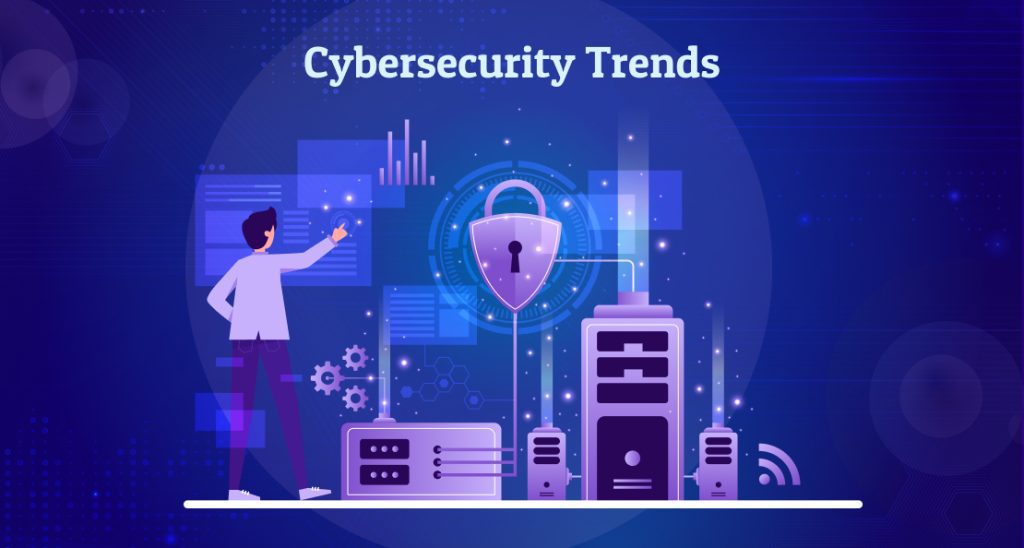
In the constantly changing digital world of 2024, Cybersecurity has grown into a vital and ever-changing field, combating emerging threats using modern security tools as technology improves the strategies of malicious actors, which leads to the identification of a variety of new and more complex security threats.
Emerging Cybersecurity threats pose serious challenges for individuals, custom software development company, and even governments. Attacks like ransomware, phishing scams, and sophisticated malware continue to grow in complexity and scope. The interconnectedness and connectivity in our ecosystems create an opportunity for cybercriminals’ vulnerabilities in systems, networks, and human behavior. Furthermore, with the rise in Internet of Things (IoT) devices, the attack range has grown, requiring proactive measures to protect against privacy and data security risks.
To combat these threats, the cybersecurity landscape is undergoing the rise of Advanced Security Solutions. Artificial Intelligence (AI) and machine learning are increasingly used in cybersecurity software that detect and combat security threats immediately. Using predictive analytics and behavioral analyses improves the capability to detect suspicious actions, thereby providing proactive security against cyber-attacks. Zero Trust Security Models, which emphasize continuous monitoring of devices and users, also provide additional security to stop unauthorized access.
The importance of Cybersecurity in the Digital Age cannot be overemphasized. As the world becomes increasingly dependent on digital technology for communication, commerce, and crucial infrastructure, the possibility of consequences of cyber-related threats to people and businesses increases. Cybersecurity is not just an issue of technical quality but an essential aspect of national security and the economy’s stability. Proactive measures, like strong cybersecurity policies, employee education, and frequent security audits, are crucial to reducing the risk of cyber attacks.
Privacy and data protection are receiving more attention in the digital age. With the massive amount of sensitive and personal information being gathered, processed, and stored, privacy protection is now an essential security element. Regulative frameworks, like that of the General Data Protection Regulation (GDPR), are designed to allow users to control their personal information and make organizations accountable for their ethical data handling practices. Security measures for cyber security, such as encryption and secure data storage, are essential in ensuring the regulations on data protection and protecting users’ privacy.
Sustainable Technology
In the ever-changing digital landscape of 2024, cybersecurity is becoming a vital and evolving field that responds to new threats using advanced security tools. As technology develops, the strategies of malicious actors lead to the detection of new and more complex security threats.
Emerging cybersecurity threats pose significant risks for businesses, individuals, and governments. Ransomware attacks or phishing scams, as well as sophisticated malware, are constantly evolving in terms of complexity and size. The interconnectivity in our ecosystems creates the opportunity for cybercriminals to exploit weaknesses in systems, networks, and human behavior. In addition, with the advent of the Internet of Things (IoT) devices, the attack range has increased, which requires proactive measures to protect against privacy and data security risks.
To combat these threats, the cybersecurity industry is seeing the growth of Advanced Security Solutions. Artificial Intelligence (AI) and machine learning are increasingly incorporated into cybersecurity tools that detect and immediately combat security threats. Analytics that predict behavior and predictive analysis improve the capability to detect suspicious activities, offering proactive security against cyber-attacks. Additionally, Zero Trust Security Models, which focus on the continuous verification of users and devices, is an additional level of security to block access by unauthorized users.
The importance of Cybersecurity in the Digital Age can’t be overemphasized. As the world becomes increasingly dependent on digital technology for communication, commerce, and critical infrastructures, the possibility of the negative impact of cyberattacks on individuals and organizations increases. Cybersecurity is not just an issue of technical quality but rather an essential element of stability and security of the nation. Effective measures, such as solid cybersecurity policies, staff education, and frequent security audits, are crucial to minimize the risks of cyber-attacks.
The Key Takeaway
In the end, the technological landscape of 2024 is an ever-changing fusion of technology and accountability. From the constant advancement of artificial intelligence to the revolutionary quantum computing potential, every trend is shaping a future in which technology seamlessly integrates with everyday life.
Despite this progress, it is vital to consider ethics, cybersecurity considerations, and sustainable practices, which must be considered. As we traverse the ever-changing digital world, responsible usage of technology, dedication to cybersecurity, and sustainable technology developments are crucial elements.
The fusion of cutting-edge technologies and ethical considerations ensures that technology is an agent of positive change, helping to address global issues and fostering an equitable and sustainable world. As we embrace these revolutionary technological advances, a thoughtful and balanced perspective is essential to fully harness technology’s power to improve all humanity’s lives.

Ready to take your business to new heights? Our team of dedicated developers is here to make your dreams a reality!

Pooja Upadhyay
Director Of People Operations & Client Relations
